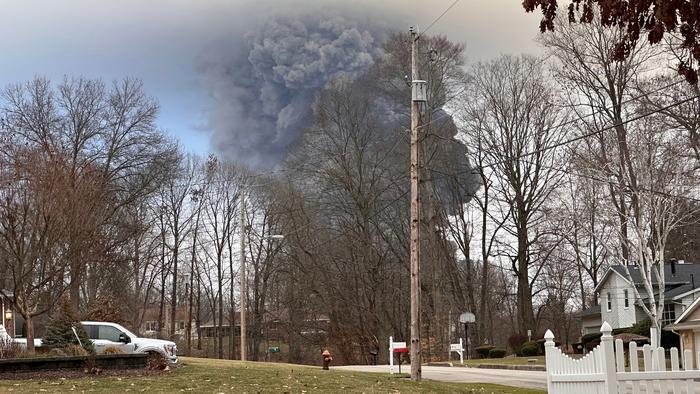The February 3, 2023, Norfolk Southern train accident in East Palestine, Ohio, released pollutants that were detected in rain and snow across a vast area of the United States and southern Canada, according to a new study published in the journal Environmental Research Letters. Researchers found that these inorganic pollutants spread over at least portions of 16 states, covering an area of 1.4 million square kilometers.
Scientists from the Wisconsin State Laboratory of Hygiene (WSLH) at the University of Wisconsin-Madison used data from the National Atmospheric Deposition Programs (NADP) National Trends Network (NTN), which routinely collects precipitation chemistry measurements at 260 sites across North America, to estimate the spatial extent and chemical elements deposited as a result of the incident.
Unexpectedly High pH Levels and Elevated Metals Detected
The study not only revealed the expected high chloride concentrations but also showed unexpectedly high pH levels (more basic) and exceptionally elevated alkali and alkaline earth metals, exceeding the 99th percentiles of the last ten years of measurements. These pollutants are important because their accumulation can impact the Earth’s aquatic and terrestrial environments in many ways.
David Gay, lead researcher and coordinator of the NADP, emphasizes the significance of these findings: “Our measurements not only show the expected high chloride concentrations, but also the vast geographical area they covered. However, even more surprising are the unexpectedly high pH levels (more basic) and exceptionally elevated alkali and alkaline earth metals, exceeding the 99th percentiles of the last ten years of measurements. All of these pollutants are important in the environment because their accumulation has an impact on the Earth’s aquatic and terrestrial environments in many ways.”
Nationwide Precipitation Monitoring Network Proves Vital
The study highlights the importance of a nationwide network for routine precipitation monitoring. “This study demonstrates the important role of a nationwide network for routine precipitation monitoring,” says Dr. Gay. “Our observations allowed us to determine the regional atmospheric impact from the accident and subsequent response activities.”
Although the current NADP networks do not quantify organic compounds that might be more specific tracers of the train cargo, the widespread impacts on precipitation documented in the study suggest that a significant amount of chemical pollution fell to the earth’s surface as a result of the accident.
The findings are significant because many inorganic pollutants in rain and snow have chemical effects on aquatic flora and fauna. The study’s results underscore the need for continued monitoring and assessment of the environmental consequences of industrial accidents like the East Palestine train derailment.
If our reporting has informed or inspired you, please consider making a donation. Every contribution, no matter the size, empowers us to continue delivering accurate, engaging, and trustworthy science and medical news. Independent journalism requires time, effort, and resources—your support ensures we can keep uncovering the stories that matter most to you.
Join us in making knowledge accessible and impactful. Thank you for standing with us!

